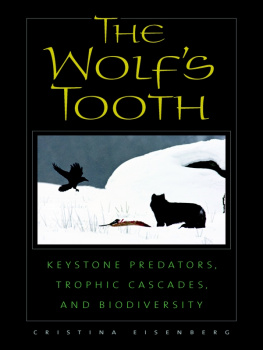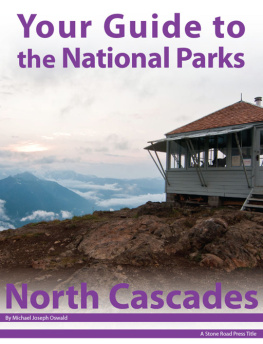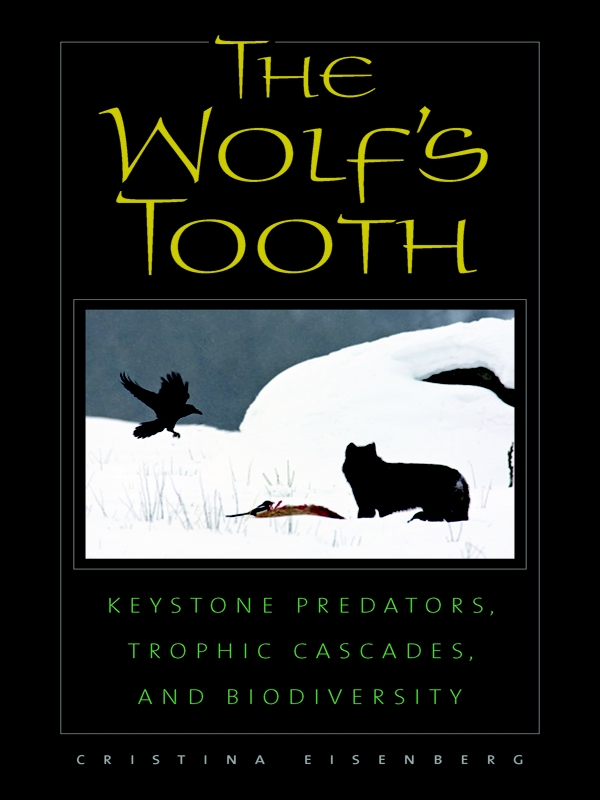Acknowledgments
A long the journey of writing this book, I have been supported in countless ways by many people. I am humbled by their collective generosity and insights, without which this book would never have come to be. While it is impossible to thank everyone, I will do my best.
Aldo Leopold, who believed that one must save all the pieces, inspired this work. I am grateful to his eldest daughter, Nina Leopold Bradley, for her steady encouragement from the beginning. My thanks to his younger daughter, Estella, who helped me look at conservation issues from multiple perspectives, and to Curt Meine for shedding light on Aldo Leopold and helping make this book possible. Terry Tempest Williams provided the seed for this work, and for that I will always be indebted to her.
This book began as my masters thesis at Prescott College, which I subsequently augmented with my work as a PhD student in forestry and wildlife at the College of Forestry, Oregon State University, and with additional material on trophic cascades. This book would not have been possible without the exceptional mentorship I have received along the way. I am especially grateful to my ecological mentors, Michael Soul, James Estes, Robert Paine, and John Terborgh, for their foundational work in trophic cascades science, and to my academic mentors, William Ripple, Thomas Lowe Fleischner, Hal Salwasser, K. Norman Johnson, Frederick Swanson, Jerry Franklin, Robert Beschta, David Hibbs, Paul Doescher, Martin Vavra, and R. Edward Grumbine, for their guidance and support of my work and this book as it developed. I am thankful for invaluable help from wildlife ecologists Rolf Peterson, Douglas Smith, Diane Boyd, Joel Berger, Kyran Kunkel, and Valerius Geist. I am grateful to John and Charlie Russell, Paul Vahldiek, Doug Dean, and John Rappold for teaching me about living with predators in multiple-use landscapes. My thanks to my mentors in the craft of writing, Rick Bass, Terry Tempest Williams, Allison Hedge Coke, Robert Michael Pyle, Charles Goodrich, and Kathleen Dean Moore. I am grateful to Black Earth Institute founding fellows Patricia Monaghan and Michael McDermott, and to this institutions distinguished fellows and scholars for their inspiration and generous advice on ecological literacy.
I am deeply grateful to Melanie Stidham, Dan Donato, Joe Fontaine, Sandy and Richard Kennedy, Michael McDermott, Trent Seager, Brett Thuma, and my brother Paco for their steadfast friendship and assistance with this book as it developed, which included reviewing multiple drafts. Don Beans, Elizabeth Hughes Bass, Bill Jaynes, and Leigh Schickendantz offered additional friendship and sustenance.
Parks Canada conservation biologists Rob Watt, Cyndi Smith, Barb Johnston, Carita Bergman, and Cliff White helped me learn about relationships at an ecosystem scale, as did their American counterparts and colleagues Jack Potter, Steve Gniadek, John Waller, Tara Carolin, Scott Emmerich, Regi Altop, and Rick McIntyre. My thanks to Kent Laudon of Montana Fish, Wildlife, and Parks and Dr. Mark Johnson for their essential lessons about wolves. Thanks to Roger Creasey, director of the Southwest Alberta Montane Research Program, for enabling my participation in this investigation on how multiple human land uses affect elk, their habitat, and their predators. I thank Carolyn Sime of Montana Fish, Wildlife, and Parks and Greg Hale of Alberta Sustainable Resource Development for facilitating my wolf research. Thanks to Ken Bible of the Wind River Experimental Forest for his hospitality and knowledge.
I thank the many field technicians, volunteers, and writers who joined me afield. I am unable to thank everyone individually because there were so many persons, but I am particularly grateful to Craig DeMars, Dan Hansche, Dave Moskowitz, Neal Wight, and Leah Katz for their expert assistance and to Mark Elbroch for his friendship and advice and for kindly sending me some of his best wildlife trackers. A warm thank-you to Prescott College students and alumni Ashley Burry-Trice, Audrey Clark, Blake Lowrey, and Mark Thorkelson for their hard work and unflagging good spirits under what were at times adverse field conditions. I wish to acknowledge exemplary volunteers Bonnie Sammons, Kathy Ross, and Sandy and Richard Kennedy and their generous contributions to my project over the years. I thank the literary scholars who joined me afield, Annie Finch, Thomas Truelove, and Christina Dickinson, for their reflections on wildness. I wish to acknowledge journalists Douglas Chadwick, Michael Jamison, Olivia Koering, and Brent Steiner, and Karen and Ralf Meyer of Green Fire Productions. I am grateful for their interest in my work via their eloquent writing, photojournalism, and filmmaking efforts.
I am grateful to the institutions that supported me in this endeavor, including the Oregon State University College of Forestry and the Oregon State University Foundation; the Boone and Crockett Club; Parks Canada; the National Park Service; Montana Fish, Wildlife, and Parks; the USDA Forest Service Pacific Northwest Research Station; and the Spring Creek Project. I am particularly grateful to Oregon State University and Prescott College for providing the atmosphere of academic freedom that sustained the creation of this book from beginning to end. All scholars should be so fortunate as to work in such a supportive academic environment. Thanks to The Nature Conservancy for use of its aptly named residence the Polebridge Palace to house my field crew when we worked with the North Fork wolves, and to Montana Coffee Traders for fueling this effort. John Frederick and Oliver Meister provided invaluable hospitality and logistical assistance.
I wish to thank the many archivists who assisted me, including those at the Aldo Leopold Foundation; the Bancroft Library at the University of California, Berkeley; Teton Science Schools; the Murie Center; the American Heritage Center at the University of Wyoming; Oregon State University; the Archives and Oral History Collections at the University of WisconsinMadison; and Isle Royale, Glacier, and Waterton Lakes national parks. Thanks to all who allowed me to use their images in this book, particularly Andrea Laliberte for her gorgeous GIS maps.
Extra special thanks to Barbara Dean and Jonathan Cobb at Island Press for their faith in my writing. Barbaras clear vision was instrumental in shaping this manuscript as it developed. She offered encouragement at every stage. Every writer should have an editor like her. Erin Johnson expertly guided me through the many details of bringing this book to life. I am very grateful to Pat Harris for her extraordinary copyediting. Her sharp eyes picked up things I failed to see and helped me hone this book.
This work would not have been possible without my family: my daughters, Bianca and Alana, and my husband, Steve Eisenberg. Their gifts of faith, love, time afield with me, and uninterrupted work time brought this book to fruition.
About Island Press
Since 1984, the nonprofit Island Press has been stimulating, shaping, and communicating the ideas that are essential for solving environmental problems worldwide. With more than 800 titles in print and some 40 new releases each year, we are the nations leading publisher on environmental issues. We identify innovative thinkers and emerging trends in the environmental field. We workwith world-renowned experts and authors to develop cross-disciplinary solutions to environmental challenges.
Island Press designs and implements coordinated book publication campaigns in order to communicate our critical messages in print, in person, and online using the latest technologies, programs, and the media. Our goal: to reach targeted audiences-scientists, policymakers, environmental advocates, the media, and concerned citizens-who can and will take action to protect the plants and animals that enrich our world, the ecosystems we need to survive, the water we drink, and the air we breathe.









